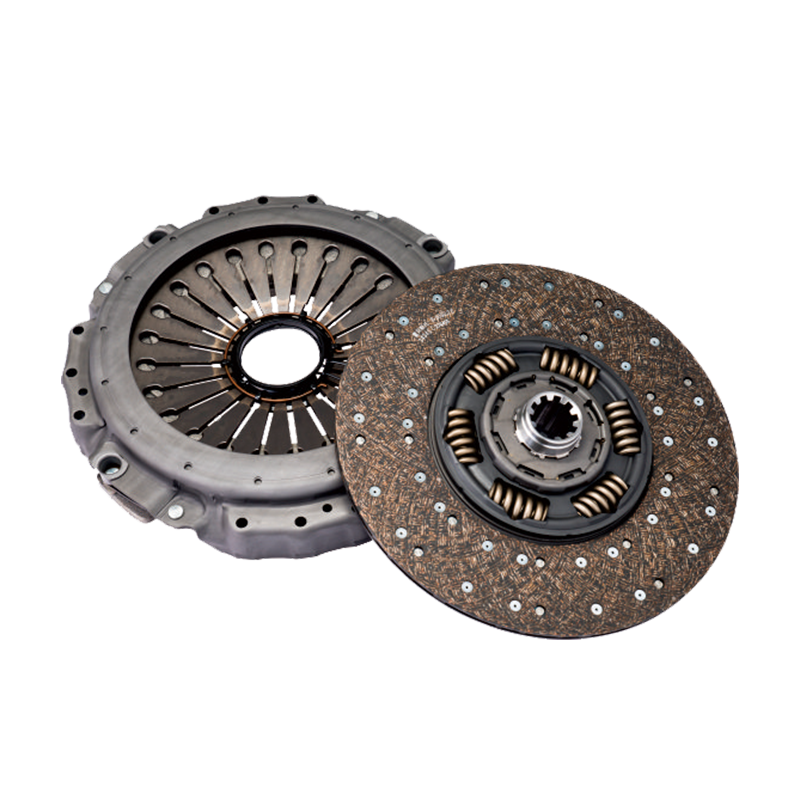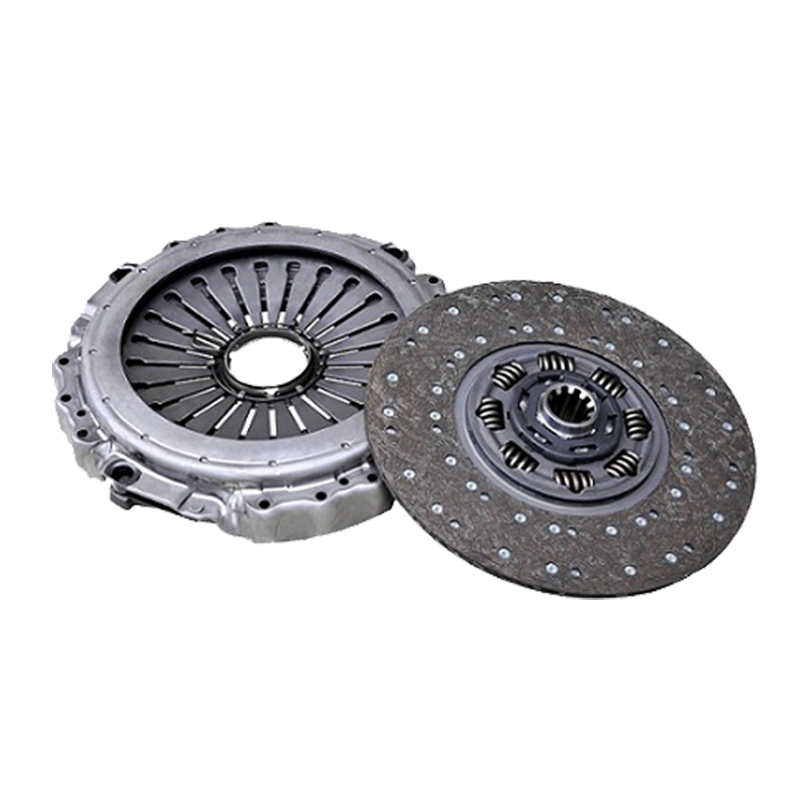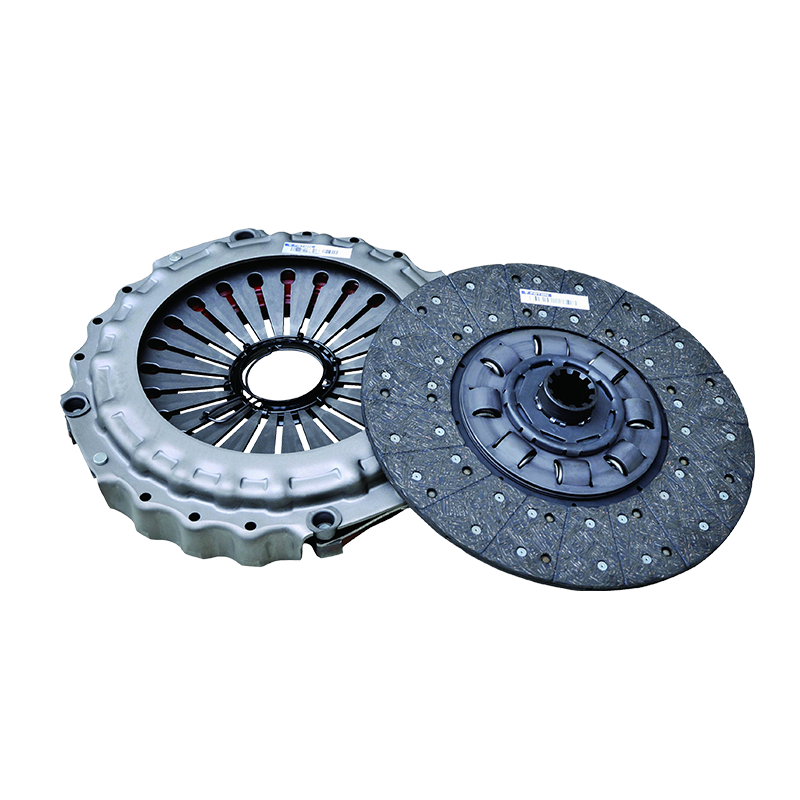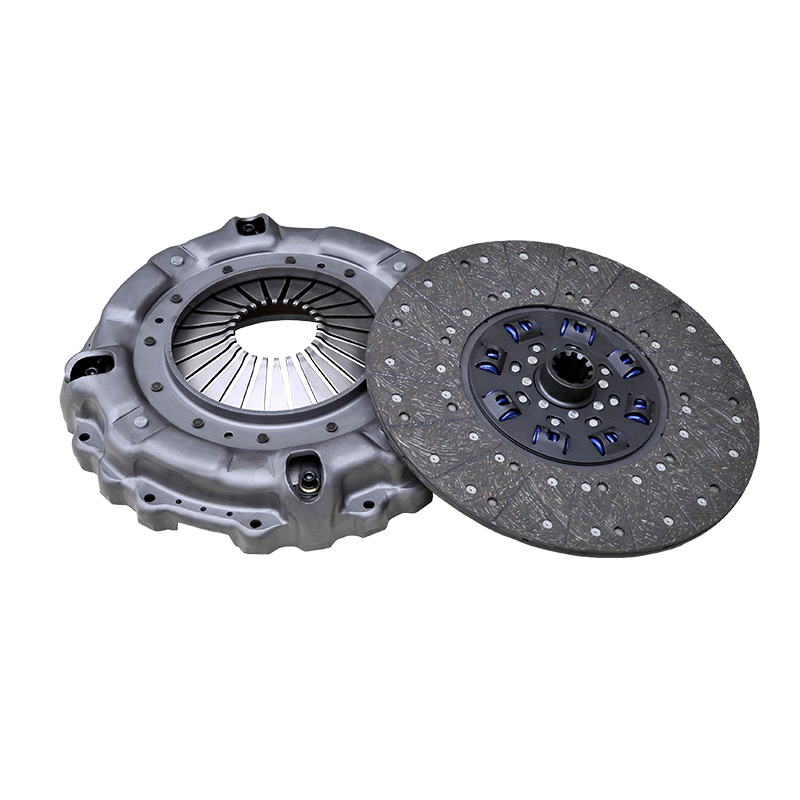La composición general y el posicionamiento funcional del conjunto del disco de embrague.
el Conjunto de disco de embrague para camión de servicio pesado Es un componente clave de la transmisión entre el motor y la caja de cambios. Su función principal es lograr un compromiso fluido y una separación completa del poder. Este conjunto se compone de múltiples componentes, como placa de fricción, cubo del disco impulsado, placa corrugada, placa de presión, etc. Entre ellos, la placa de fricción es el componente de contacto directamente involucrado en la transmisión de potencia y es el centro central de todo el funcionamiento del sistema. Cuando el motor está en marcha, el conjunto del disco de embrague controla el encendido y apagado del flujo de potencia mediante el cambio del estado de contacto entre la placa de fricción y el volante y la placa de presión, asegurando la ejecución suave del arranque, cambio, estacionamiento y otras operaciones del vehículo.
el core role of friction plate in power transmission
el core value of friction plate is reflected in its ability to accurately control power. In the power transmission stage, the pressure plate presses the friction plate against the flywheel surface under the action of the spring force. At this time, the friction plate transmits the torque output by the engine from the flywheel to the driven disc by virtue of its own friction with the metal surface, and then transmits it to the gearbox input shaft through the driven disc hub, and finally drives the wheels to rotate. In this process, the friction coefficient of the friction plate directly determines the efficiency of power transmission. Only when the friction coefficient is stable and large enough can the torque transmission be ensured without slippage and power loss be avoided. In the power cut-off stage, after the driver steps on the clutch pedal, the pressure plate separates from the friction plate, the friction between the friction plate and the flywheel disappears, and the power transmission path is interrupted, creating conditions for the shifting operation.
Impacto directo del rendimiento del disco de fricción en el conjunto del disco de embrague
el performance parameters of the friction plate are the core indicators for measuring the quality of heavy duty truck clutch disc assembly. The stability of the friction coefficient is the key. If the friction coefficient decreases significantly with the increase of temperature, it will cause the clutch to slip, the power transmission efficiency to drop sharply, and even cause problems such as the vehicle's inability to climb and slow acceleration. Wear resistance determines the service life of the clutch plate assembly. Heavy trucks are in a high-load operation state for a long time. If the friction plate wears too quickly, the replacement cycle of the assembly will be shortened and the maintenance cost will be increased. The impact resistance of the friction plate is also important. When the vehicle starts or accelerates sharply, the friction plate needs to withstand the instantaneous increase in torque impact. If its structural strength is insufficient, cracks or partial detachment may occur, directly leading to the failure of the clutch plate assembly. The material selection and process treatment of the friction plate are the basis for ensuring the reliability of the clutch plate assembly.
el linkage relationship between the friction plate and the vehicle transmission system
el performance of the friction plate is not only limited to the heavy duty truck clutch disc assembly, but also has a chain effect on the vehicle transmission system. When the friction plate is unevenly worn or the friction coefficient fluctuates, intermittent impact will occur in the power transmission. This impact will be transmitted to the rear axle through the gearbox, drive shaft and other components. Long-term accumulation may lead to increased gear meshing clearance, increased bearing wear, and even cause serious faults such as drive shaft resonance. On the contrary, high-quality friction plates can reduce the additional load of the transmission system through smooth power engagement, and extend the service life of key components such as the gearbox and drive axle. From the perspective of vehicle operation, the stability of the friction plate is directly related to the vehicle's attendance rate. Frequent clutch failures will cause the vehicle to stop, and reliable friction plate performance is the hidden prerequisite for ensuring transportation efficiency.
Características de los materiales y requisitos de proceso de las placas de fricción.
el performance of the friction plate is determined by its material composition and manufacturing process. At present, mainstream friction plates are mostly made of composite fiber materials, with metal fibers, glass fibers, aramid fibers, etc. as the skeleton, mixed with friction performance regulators and high-temperature adhesives. This composite material can not only ensure a sufficient friction coefficient, but also maintain structural stability in high temperature environments. In the manufacturing process, the uniform distribution of fibers is the key. If the local fiber density is insufficient, the friction plate will wear at different speeds and shorten its service life. The curing process of the adhesive directly affects the high-temperature resistance of the friction plate. It is necessary to precisely control the temperature and pressure to ensure the bonding strength between the materials. The flatness of the friction plate surface is also crucial. Too high roughness will aggravate the wear of the flywheel and the pressure plate, while too low roughness may lead to insufficient initial friction and affect the power transmission efficiency.






 No 25, Hu Chuang Road, Parque Industrial del Nuevo Distrito, Suzhou, Jiangsu, China.
No 25, Hu Chuang Road, Parque Industrial del Nuevo Distrito, Suzhou, Jiangsu, China.  +86-13338663262
+86-13338663262 
